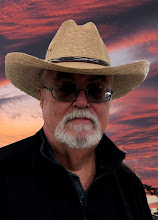 The reviews of Hard Case Crime’s recent release of Mickey Spillane’s final crime novel DEAD STREET (edited and completed by Max Allan Collins) indicate something of a generation gap between readers, with most of the older ones who became Spillane fans back in the Fifties and Sixties enjoying it while some of the younger ones have been less than impressed. Geezer that I am, you know which camp I fall into. I started reading Spillane in the mid-Sixties (THE DEEP was the first book of his that I read) and worked my way through the rest of his novels, up to that point, in fairly short order. I vividly recall sitting on the front porch of my sister’s house and reading ONE LONELY NIGHT on an August evening in 1970. With a little research I could come up with the exact date. You know a book’s made a real impression on you when you remember that much 37 years later. As far as I’m concerned, the first chapter of ONE LONELY NIGHT is the best opening chapter of any mystery novel ever written (although THE HOUND OF THE BASKERVILLES comes close).
The reviews of Hard Case Crime’s recent release of Mickey Spillane’s final crime novel DEAD STREET (edited and completed by Max Allan Collins) indicate something of a generation gap between readers, with most of the older ones who became Spillane fans back in the Fifties and Sixties enjoying it while some of the younger ones have been less than impressed. Geezer that I am, you know which camp I fall into. I started reading Spillane in the mid-Sixties (THE DEEP was the first book of his that I read) and worked my way through the rest of his novels, up to that point, in fairly short order. I vividly recall sitting on the front porch of my sister’s house and reading ONE LONELY NIGHT on an August evening in 1970. With a little research I could come up with the exact date. You know a book’s made a real impression on you when you remember that much 37 years later. As far as I’m concerned, the first chapter of ONE LONELY NIGHT is the best opening chapter of any mystery novel ever written (although THE HOUND OF THE BASKERVILLES comes close).So what did I think of DEAD STREET? Well, I liked it. It’s not as good as vintage Spillane, but there are some really good lines of dialogue and an intriguing plot that mixes a beautiful woman who apparently died in a mob abduction twenty years earlier but actually didn’t; a couple of retirement communities in Florida, one populated by former cops and the other by retired gangsters; an old brownstone in New York that’s scheduled for demolition; and a missing chunk of fissionable material that could be used to make a nuclear bomb. The hero, a retired police captain named Jack Stang who was known as The Shooter, is a classic Spillane protagonist and lives up to his nickname before the book is over. The book’s only comparative weakness is a curious lack of action for long stretches, something that was also apparent in Spillane’s most recent novel before this one, SOMETHING’S DOWN THERE. Maybe that’s a by-product of Spillane growing older and more contemplative. There’s a vivid sense of melancholy and nostalgia in DEAD STREET. Everything in the plot grows out of incidents that happened decades earlier, and the low-key narration reinforces that.
As for Max Allan Collins’s work on the book (he edited it and wrote the final three chapters based on Spillane’s notes), it’s excellent. He does a fine job of capturing Spillane’s style, especially in a shoot-out near the end and the final confrontation with the villain. There are more of these posthumous collaborations coming, and I’m certainly looking forward to reading them.
Overall, if you’ve never read Spillane before, it would probably be a good idea not to start with DEAD STREET. My recommendation would be to go all the way back to I, THE JURY and read the Mike Hammer novels in order. But if you’ve been a Spillane fan for more years than you like to think about, as I am, I believe you’ll have a really entertaining time with DEAD STREET.

2 comments:
Thanks for the review, James. I'll be looking for it this weekend.
There have been lots of reviews of DEAD STREET, mostly very good. This is the smartest. Thanks, James!
Max Allan Collins
Post a Comment